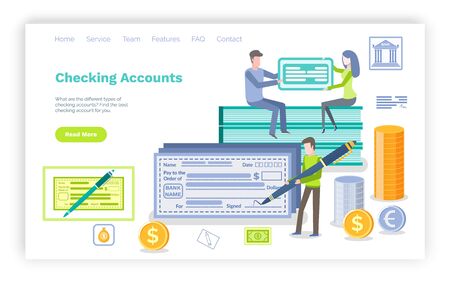Understanding Why Employers Ask About Failure
If you’re preparing for interviews in the U.S., you’ll probably come across the classic question: “Describe a time you failed and what you learned from it.” While this might feel a bit intimidating, there’s a reason American employers love to ask about failure. Let’s break down why this question matters so much in the U.S. job market.
The Real Purpose Behind the Question
U.S. employers aren’t trying to trip you up—they want to understand how you respond when things don’t go as planned. In American work culture, your attitude toward mistakes and setbacks can reveal important qualities that matter to teams and organizations.
What Are Employers Really Looking For?
| Quality | What It Shows About You |
|---|---|
| Growth Mindset | You see failure as an opportunity to learn, not a dead end. |
| Self-Awareness | You can honestly recognize your own mistakes and areas for improvement. |
| Problem-Solving Ability | You know how to bounce back, adapt, and find solutions. |
Why These Qualities Matter in American Workplaces
American employers value people who are open to feedback and willing to grow. In fast-paced environments, being able to learn from mistakes is often more important than never making any errors at all. This question also helps interviewers see if you take responsibility or just make excuses—a big difference when it comes to working well with others.
Quick Tip:
When answering, focus on what you did after the failure and how it helped you improve. This shows hiring managers that you’re resilient and proactive—two traits highly valued in U.S. companies.
2. How to Select an Appropriate Example
When you’re preparing to answer the classic US interview question “Describe a time you failed and what you learned,” picking the right story is just as important as how you tell it. Interviewers aren’t looking for perfection—they want to see self-awareness, honesty, and growth. Here’s how to choose an example that’s both genuine and professional, while making sure it doesn’t raise red flags.
What Makes a Good Failure Example?
| Do | Don’t |
|---|---|
| Pick a real work-related situation | Avoid deeply personal or irrelevant stories |
| Choose something with a clear lesson learned | Don’t select a failure that ended in disaster or dismissal |
| Show accountability for your actions | Don’t blame others or make excuses |
| Highlight what changed after the experience | Don’t pick a recent or repeated mistake without resolution |
Stay Professional and Genuine
Your best bet is to share a story from your professional life—maybe a missed deadline, a project that didn’t meet expectations, or a communication mishap. Make sure it’s not something so serious that it would make the interviewer question your suitability for the job (for example, ethical violations or gross negligence). Aim for an example where you took responsibility, reflected on what went wrong, and made changes afterward.
Tips for Staying Honest and Humble
- Be truthful: Don’t invent failures—interviewers can usually tell when you’re stretching the truth.
- Acknowledge your role: Show how you contributed to the failure, even if others were involved.
- Emphasize learning: Focus more on what you learned than on what went wrong.
- Avoid humblebrags: Don’t disguise a strength as a weakness (e.g., “I work too hard”). Be real about your growth areas.
Quick Checklist Before You Share Your Story
- Is my example relevant to the workplace?
- Did I demonstrate accountability?
- Have I clearly explained what I learned?
- Does my story end on a positive note of improvement?
Selecting the right example is all about showing maturity, readiness to grow, and cultural fit with US workplaces. When in doubt, keep it authentic and focus on progress!

3. Structuring Your Answer with the STAR Method
When youre asked about a time you failed and what you learned in a US job interview, its easy to get flustered or go off on a tangent. That’s where the STAR method comes in handy! This approach helps you stay focused and makes your story clear for the interviewer. Let’s break down each part of STAR—Situation, Task, Action, and Result—to help you organize your answer like a pro.
What is the STAR Method?
The STAR method is a popular framework in American interviews. It guides you to share behavioral stories in a way thats structured and easy to follow. Here’s a quick overview:
| STAR Component | What to Include | Sample Questions to Ask Yourself |
|---|---|---|
| Situation | Set the scene. Briefly describe the context or background. | What was happening? Who was involved? |
| Task | Explain your responsibility or role in that situation. | What was expected of you? |
| Action | Describe the steps you took and decisions you made. | What did you do? Why did you choose that approach? |
| Result | Share the outcome, what went wrong, and most importantly, what you learned. | What happened? How did you grow from this experience? |
Applying STAR to Your Failure Story
When talking about failure in an interview, using STAR keeps your answer honest and organized without sounding negative. Here’s how to put it into practice:
1. Situation:
Start by setting the stage. For example: “Last year, I was leading a team project at my previous job where we had to launch a new internal tool by a tight deadline.” Keep it brief but give enough background so the interviewer understands the scenario.
2. Task:
Next, explain your responsibility: “As the project manager, my role was to coordinate tasks between departments and ensure everyone stayed on track.” This shows ownership of your part in the story.
3. Action:
This is where you describe what you did: “I set up weekly check-ins and created a shared timeline, but I underestimated how much support some team members needed with the new technology.” Be specific about your actions—even if they led to failure.
4. Result:
Finally, share what happened and focus on learning: “We missed our initial deadline because several teammates fell behind. Afterward, I realized the importance of checking in individually, not just as a group. Now, I always make sure to assess each person’s comfort level early on.” Here, highlight personal growth or skills gained from the experience.
Why Do US Employers Value STAR Answers?
Candidates who use STAR show self-awareness and strong communication skills—qualities highly valued in American workplaces. This method also demonstrates that you can reflect on setbacks constructively and learn from them, which is exactly what interviewers are looking for when they ask about failures.
4. Focusing on Growth and Takeaways
Why U.S. Employers Value Growth
In American job interviews, interviewers aren’t just interested in the mistake you made—they want to know how you responded to that failure and what you learned from it. U.S. employers highly value a growth mindset, meaning they look for candidates who can learn from setbacks and actively improve themselves.
How to Highlight Your Growth
To make your answer stand out in the U.S. job market, focus on these strategies:
- Be Honest, But Brief: Clearly state the failure without dwelling on negativity.
- Show Self-Awareness: Mention what you realized about your actions or decisions.
- Detail What You Learned: Explain the concrete lessons or skills gained from the experience.
- Emphasize Improvement: Share specific changes you made as a result—this shows continuous development, which is key in U.S. workplaces.
- Relate to the Job: Connect your growth to skills relevant for the position you’re applying for.
Example Response Structure
| Step | What to Cover | Sample Phrase |
|---|---|---|
| 1. Briefly describe the failure | Name the situation and what went wrong | “I missed an important deadline on a team project because I underestimated how long each step would take.” |
| 2. Explain what you learned | Mention insights or new understanding | “This taught me the importance of building buffer time into project plans and communicating early when issues arise.” |
| 3. Show how you improved | Describe actions taken afterwards | “Since then, I use detailed timelines and check-ins, which have helped my team deliver projects ahead of schedule.” |
| 4. Connect to the role | Tie your takeaway to job requirements | “I believe these project management skills will help me contribute effectively at your company.” |
Avoid Common Pitfalls
- Avoid blaming others: Focus on your own actions and learning.
- Don’t pick trivial failures: Choose an example that’s meaningful and demonstrates real growth.
- No “humble bragging”: Don’t disguise a strength as a weakness (e.g., “I care too much”). U.S. employers appreciate genuine reflection.
Your Takeaway for U.S. Interviews
The key is to show that failure isn’t the end—it’s a launchpad for improvement. By highlighting what you learned and how you’ve grown, you’ll align perfectly with U.S. employers’ expectations for adaptability and ongoing development.
5. Common Pitfalls to Avoid
When answering the “Describe a time you failed and what you learned” question in US interviews, it’s easy to fall into some common traps. Understanding these pitfalls—and knowing how to avoid them—can help you deliver a response that feels genuine, culturally appropriate, and impressive to American interviewers.
Typical Mistakes Candidates Make
| Mistake | Why Its a Problem | How to Fix It |
|---|---|---|
| Blaming Others | Shifting responsibility away from yourself makes you seem unaccountable and unwilling to grow. | Focus on your own actions and what you learned, even if others were involved. |
| Choosing Cliché Examples | Examples like “I work too hard” or “I care too much” sound insincere and overused in the US job market. | Select a real, relatable situation where you genuinely struggled and improved. |
| Lack of Reflection | Failing to explain what you learned can make your story sound incomplete or shallow. | Always share specific lessons or new skills gained from the experience. |
| Dwelling on Negativity | Spending too much time on what went wrong rather than focusing on growth can feel pessimistic. | Briefly describe the failure, but emphasize your positive actions afterward. |
| No Relevance to the Job | If your example doesn’t relate to the role, it may not impress the interviewer. | Pick an experience that highlights qualities or skills important for the position. |
Culturally Aware Advice for Framing Your Response
Be Honest—but Professional: American interviewers value authenticity, but keep your example workplace-appropriate. Avoid overly personal stories or sensitive topics.
Show Accountability: Admitting your own mistakes is seen as a sign of maturity and self-awareness in US culture.
Highlight Growth: Focus on what you did differently afterward. This shows resilience—a highly valued trait in American workplaces.
Avoid Playing It Too Safe: If your answer feels rehearsed or risk-free, it may come across as lacking self-awareness. Don’t be afraid to show vulnerability as long as you end on a positive note.
Tie Back to the Role: Whenever possible, connect your lesson learned with the requirements of the job you’re applying for. This demonstrates insight and motivation.
6. Sample Answers and Key Phrases
U.S.-Style Sample Responses
When answering the “Describe a time you failed and what you learned” question in an American job interview, it’s important to be honest, take responsibility, and focus on growth. Here are two sample responses that reflect U.S. workplace expectations:
Sample Answer 1: Team Project Deadline
Situation: In my previous role as a marketing coordinator, I was responsible for overseeing a team project with a tight deadline.
Failure: Unfortunately, I underestimated the time required for some tasks and didn’t delegate enough work, which caused us to miss the initial deadline.
What I Learned: I learned the importance of clear communication and realistic planning when managing projects. Since then, I’ve used project management tools to track progress and set more achievable timelines, which has helped my teams deliver on schedule.
Sample Answer 2: Communication Breakdown
Situation: Early in my career, I was tasked with presenting a proposal to upper management.
Failure: I focused too much on technical details and didn’t tailor my message to my audience, so my main points were lost.
What I Learned: This experience taught me to consider my audience’s perspective. Now, I always clarify expectations ahead of time and adjust my communication style accordingly. It’s made me a much more effective presenter.
Key Phrases for U.S. Interviews
The following phrases are commonly used in American interviews and can help make your answer sound natural and culturally appropriate:
| Key Phrase | How to Use It |
|---|---|
| I take full responsibility for… | Shows accountability and maturity |
| This experience taught me… | Highlights learning and growth from failure |
| If I could do it again, I would… | Demonstrates reflection and improvement |
| I realized the importance of… | Signals self-awareness and willingness to change |
| I’ve since implemented… | Makes it clear that you have taken concrete steps to improve |
| I now approach similar situations by… | Shows proactive adaptation and problem-solving skills |
Tips for Crafting Your Own Answer
- Select a real but non-critical failure that doesn’t raise red flags about your ability to do the job.
- Avoid blaming others; focus on your own actions.
- Emphasize what you learned and how you’ve grown or changed since then.
- Keep your response positive—interviewers want to see resilience and adaptability.
Your Turn!
Try using the key phrases above with your own examples to create an authentic answer that fits both your experience and American workplace culture.


